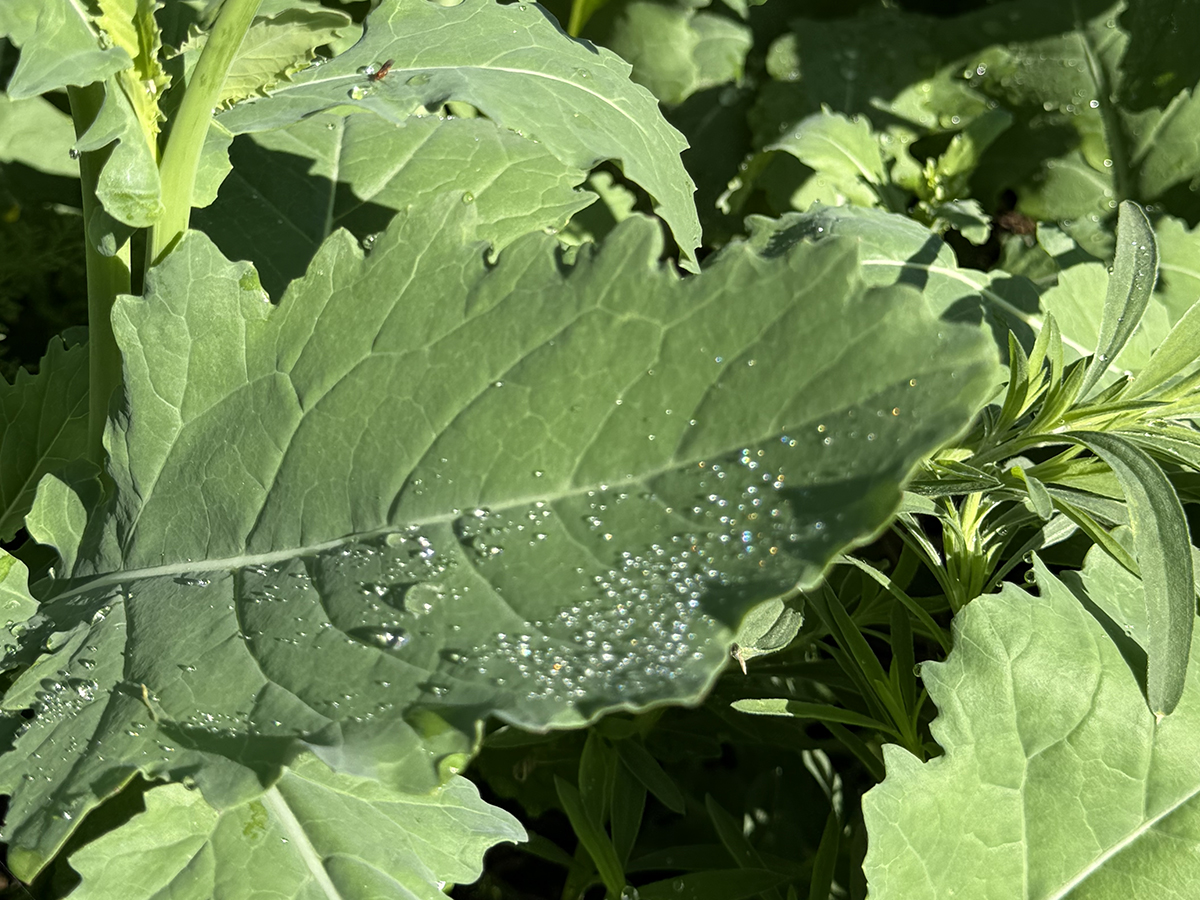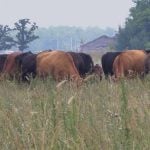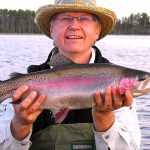TOLSTOI, Man.- For Beerd Hop, Holsteins are more than a mainstay on his 760-acre family farm located minutes from the Manitoba-American border.
“I love what I do; milking cows is my hobby,” he said. “I don’t feel the need to not be here.”
Beerd is content to stay close to home, tending to the herds of both dairy and beef cattle.
He labeled himself “the homebody” and his wife Justina “his social conscience.”
A past-president of the Shevchenko school parent advisory council at Vita and president-elect for the eastern region of the Manitoba Women’s Institute, Justina also regularly loads up a pen full of animals for presentations in the city.
Read Also

Relative humidity linked to dew point
The dew point is the temperature that we would have to cool the air down to for condensation (or dew) to begin forming.
“She likes to talk to people and be involved,” said Beerd. “It suits us well.”
The animal care sessions grew from a desire to educate non-farmers about farming practices, say the Hops.
For best efficiency, Beerd said farmers have to take good care of their animals.
“It doesn’t help me to abuse my animals. Then I don’t get production and it only costs me more money,” he said.
In the mid-1980s, as a mother of three preschool children, Marinus, Anton John and Rena, Justina got involved with WI “to get out with women and do crazy things.”
She is known for decorating herself with tassels and flags at meetings to get people to come over and start talking.
Justina has tackled projects ranging from the serious – farm safety – to the fun – knitting the world’s longest scarf. She represented Manitoba at the recent ACWW conference in Hamilton, Ont., learning about the plight of women around the world.
The Hops have also hosted Japanese exchange students and mentored new immigrant farmers.
In 4-H, Justina has led projects in babysitting, all-terrain vehicles and a favoured subject, farm safety.
“You can’t necessarily change all people’s thinking but maybe make them stop and think,” she said.
The Hops’ now-teenaged children participate in 4-H.
In addition to guiding the 4-H welding project this year, Beerd also serves on a committee for the milk board, advising on issues like marketing, advertising and transportation.
Justina felt being involved gave her a better understanding of the issues. Her parent advisory council involvement grew from helping out at school and has allowed her to be part of staffing, attendance policy and bussing.
“If you don’t try to change things, what right do you have to complain?” she asks.
At home, Justina is principally responsible for the 45-head commercial beef herd, but gets some help monitoring the herd from her 75-year-old father and his binoculars. Her Mennonite parents still live on the farm, now owned by Justina and Beerd, where they raised 11 children.
Ukrainians originally settled the area and named the town for the Russian author Leo Tolstoy.
Beerd manages the Holsteins, with Justina helping with milking approximately 70 cows. The children care for the 70 head of young stock.
The Holsteins feed the close-knit family, while the beef herd and an investment in the White Clay hog barns provide for extras.
In 1996, the Hops became shareholders in the 4,000 hog feeder barn operation, which rents a corner of their land.
Beerd, who grew up with Holsteins in Holland, bought the farm with his savings and Farm Credit Canada loans in 1981. The previous operator had gone broke, he said.
Since that time, he has added forage and pasture land, moved and improved barns and milking systems and upped his quota “little bits at a time” to 2,000 litres per day from 300. Justina also worked off-farm for two years.
Holsteins are easy to work with, Beerd said.
“They’re not fussy and not picky about people,” said Beerd.
“The cows will give you an honest dollar for an honest day’s work.”
Rather than invest in a lot of expensive machines or extra help, the Hops buy their grain and have neighbours custom bale their forage crops.
“When I bought the farm, it was cheaper to buy than a combine,” said Beerd.
Noting the dairy industry is less influenced by world markets and subsidies, Beerd felt the only answer for struggling grain farmers might be to create feeder barns to provide a market for what they grow.
He said prices are good for beef cattle and hogs, which also provide markets for poorer-quality feed. The dairy herd gives the farm a steady cash flow year-round.
A computerized feeding system in the dairy barn largely accounts for a decade’s worth of first and second place milking production awards for Jubema Holsteins. The awards line the hallway of their refurbished 100-year-old home.
“Higher production gets you noticed at the bank,” said Beerd.
The milking cows are milked in a parlour twice daily and roam freely through the barn at other times. At special feeding stalls, a transponder around each cow’s neck sets off the dispensing of computerized grain rations customized to each cow’s
dietary needs.
Hay is readily available throughout the barn to supplement that feed.
Other labour-saving devices include a skid-steer to move in feed.
“For us, it’s been a management tool that can take care of less cows for the same amount of quota we have,” said Beerd. They also use more absorbent shavings and a less-slick grooved floor.
The good has been mixed with the bad for the Hops, who lost a shed, feed and equipment in two separate fires. They credited neighbours’ donations with helping them rebound.
The future of the family farm will be decided by the children’s career plans, with both Hops encouraging off-farm work before making any decisions about farming. In their mid-40s, the Hops are not yet ready to share the farm.
“I am still too young to be a boss with my kid,” said Beerd.
















